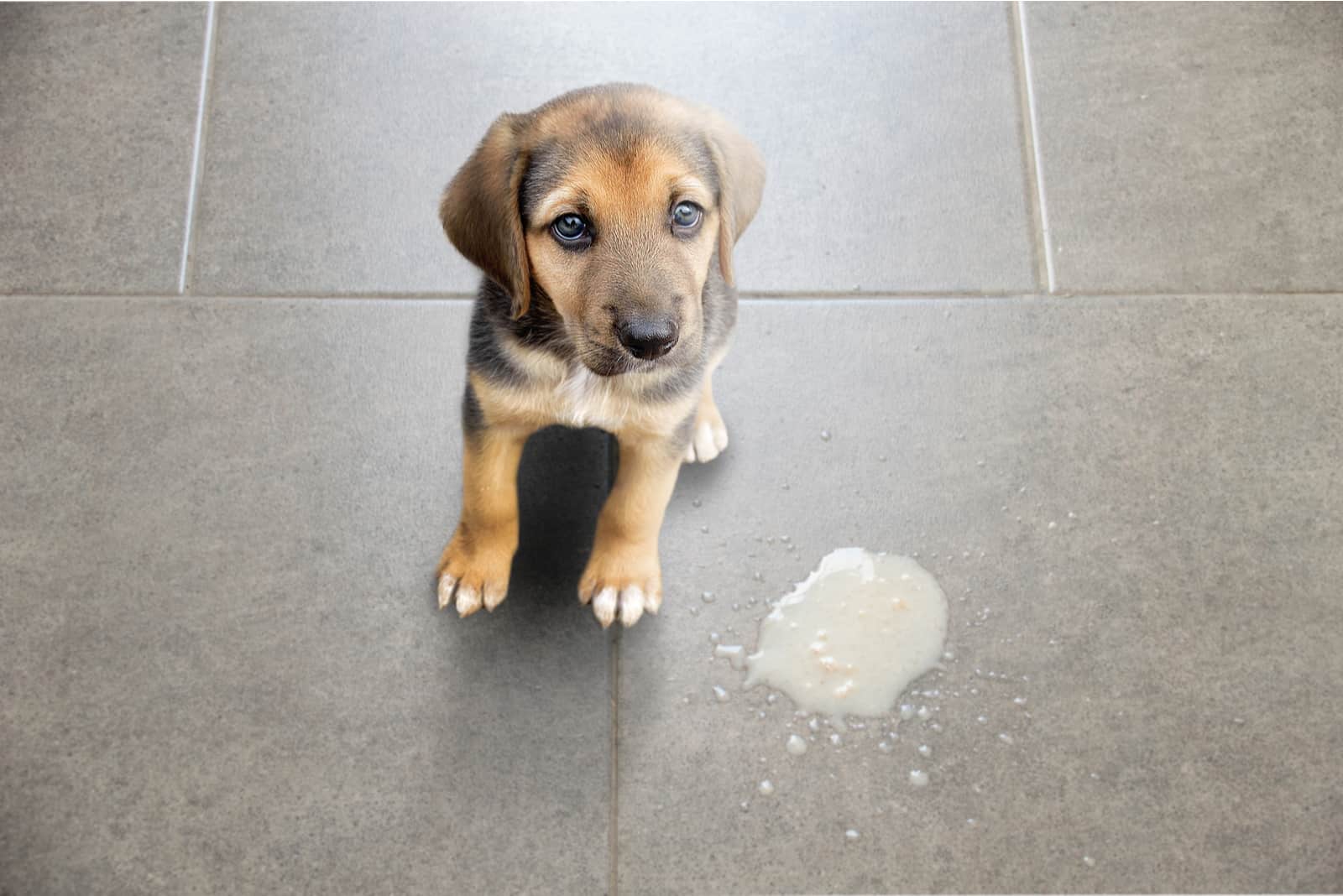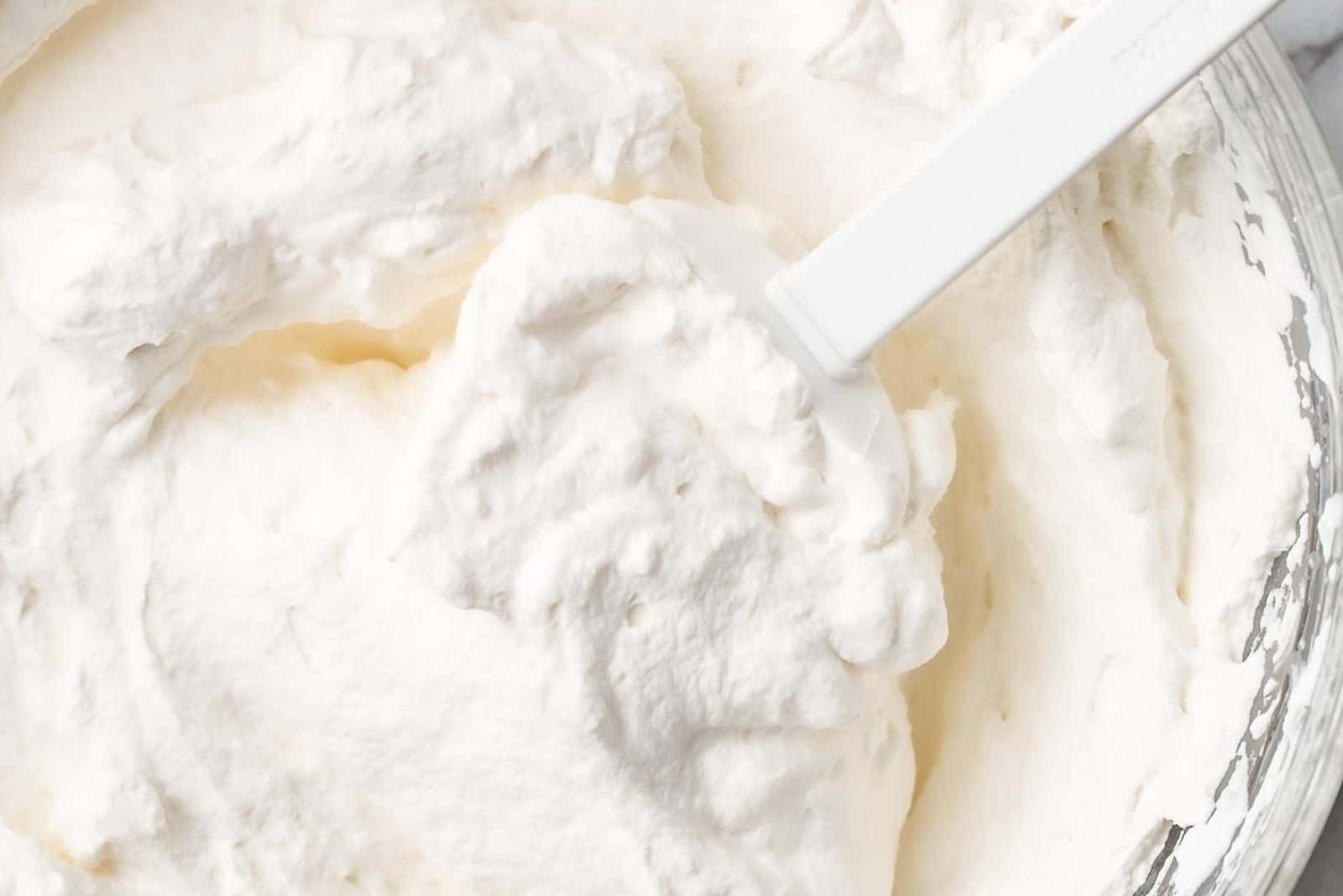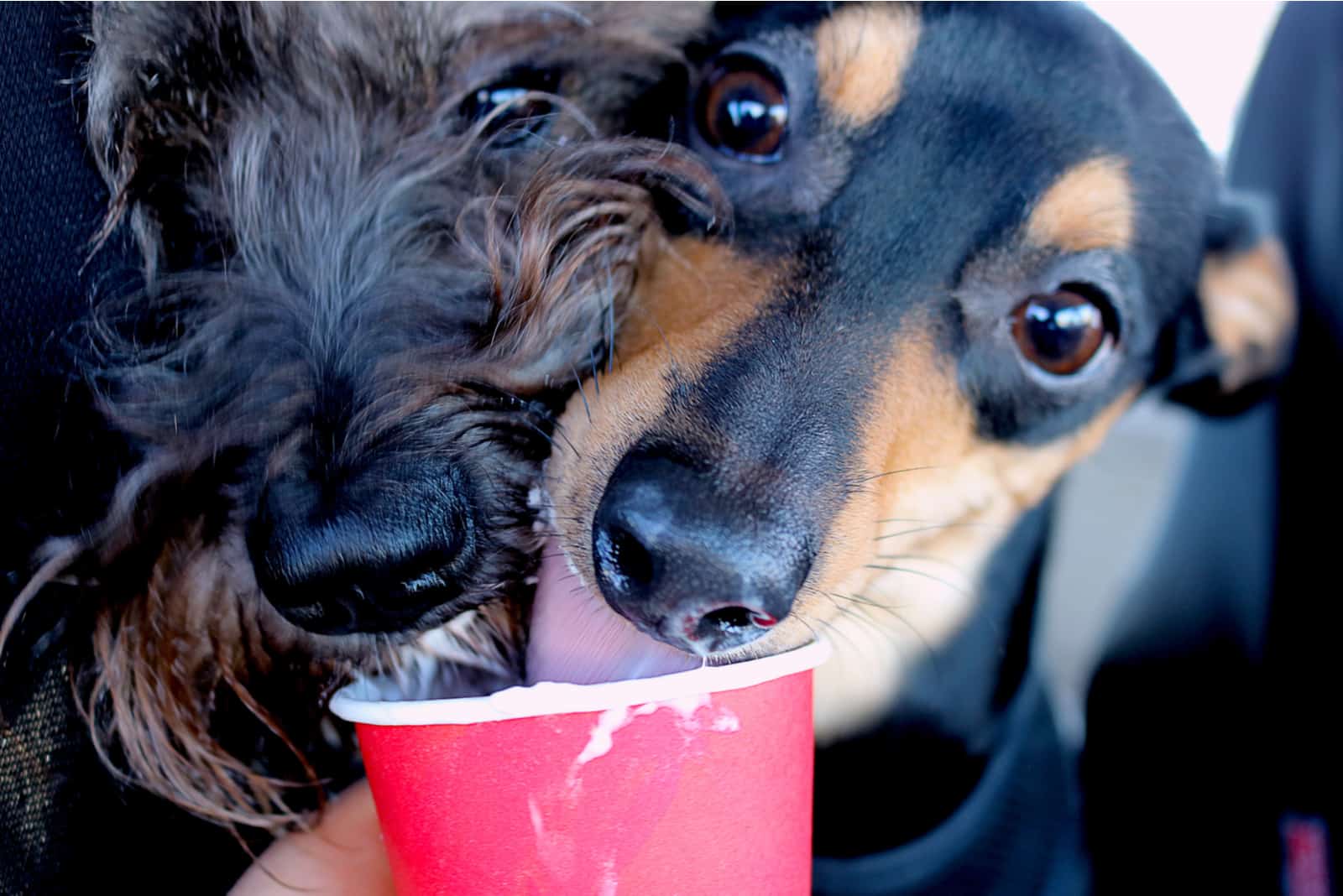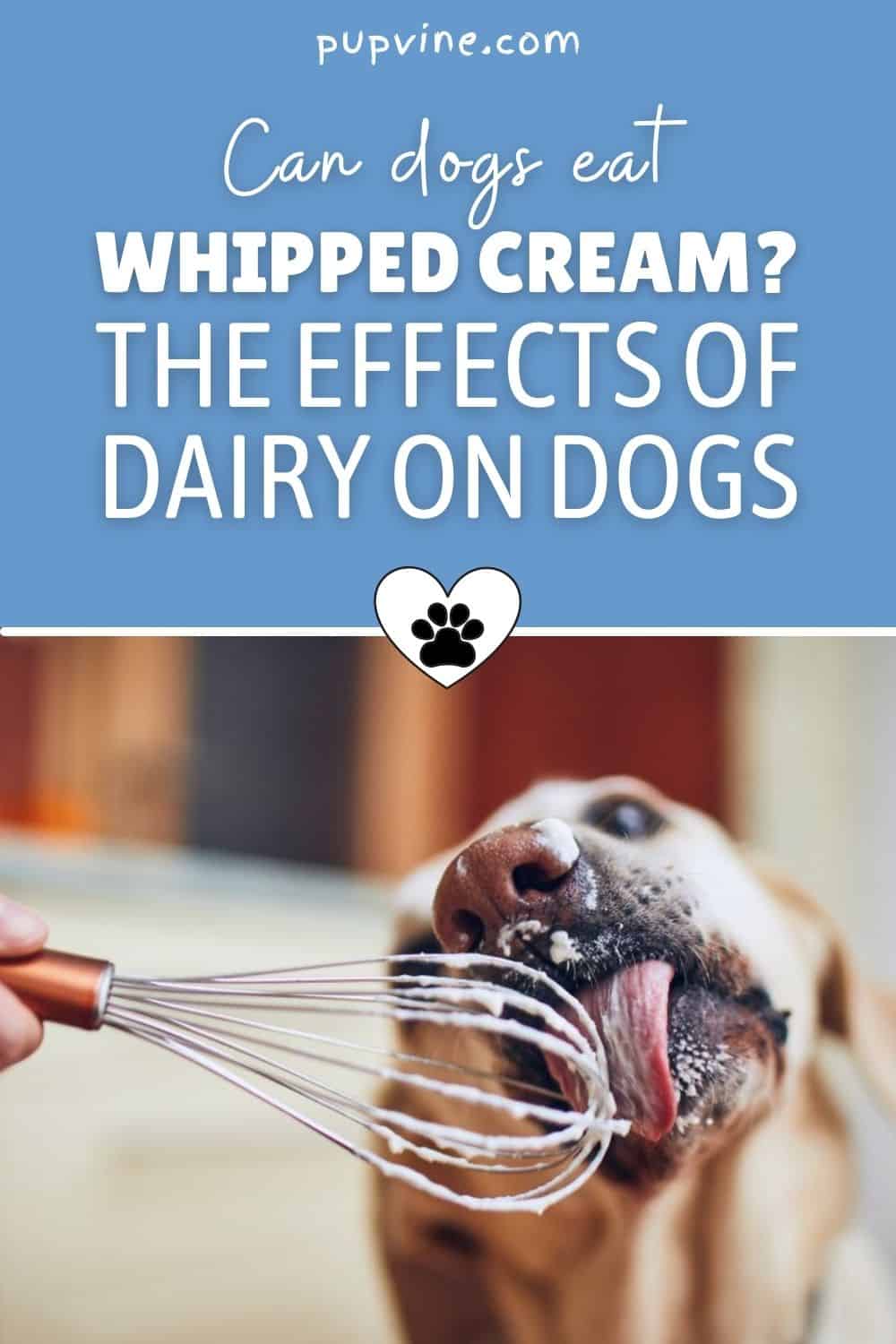We all love the occasional treat once in a while. Sometimes we indulge a little too often, and we accept the consequences.
Whether it’s a chocolate bar, cake, or slice of pie with a dollop of whipped cream, these things make us feel good for a while, whatever the long term effects!
Dog owners often face a dilemma when it comes to treats. Their doggy friends sit and drool as they watch them enjoying that delicious human food. Should they let them have some?
What about something as harmless as that whipped cream on your pie? Surely that’s safe for dogs to eat?
Before giving dogs anything other than their regular food, it is always best to investigate to find out the facts. After all, you don’t want to make them ill!
Dogs And Dairy Products

Just like millions of humans, many dogs suffer from lactose intolerance. This happens because of a type of sugar that is present in milk, called lactose.
To digest this sugar, which is actually two different sugar molecules joined together, the body needs to create the enzyme lactase.
This enzyme splits the two sugar molecules apart, making them easier to digest. The trouble is, most dogs are unable to produce lactase (or produce very small amounts), which means that all dogs have varying levels of lactose intolerance.
It’s a simple biological fact that mammals are only designed to digest milk (from their mothers) up to the point when they are weaned onto solid foods. Beyond this, mammals generally lose the ability to digest lactose efficiently.
Approximately 70% of humans are lactose intolerant, with the remaining 30% only able to digest it because of lactase persistence, an evolutionary change forced by continuing to drink milk (mostly from cows) even though our bodies are not designed to do so.
On the other hand, dogs have not experienced this change, which means that they will be even more prone to an adverse reaction to dairy products.
Some dogs may also be allergic to dairy, which is entirely different from intolerance. The allergy relates to the protein present in the product, and although some of the symptoms might be similar, they will generally be more severe.
How Might Dairy Affect My Dog?

If your furry friend is intolerant to dairy foods, they will display the typical signs of an upset stomach.
• Bloating — although the stomach and the small and large intestines are able to stretch to accommodate food and the gasses produced during digestion, excess build-up of gas can cause the stomach to swell, which is painful.
• Flatulence — all that extra gas, caused by bacteria breaking down the lactose that isn’t digested, has to eventually come out!
• Diarrhea — lactose intolerance causes more water to accumulate in the colon, which causes the stool to become loose and watery. This is usually the first sign of an intolerance to dairy.
• Vomiting — any dog owner knows that it doesn’t always take much for this to happen! Dogs who are particularly dairy-sensitive may reject it this way, especially if they have consumed large amounts.
While these symptoms are unpleasant, it is unlikely that they will last long or cause any permanent damage.
The bigger worry is when these signal a dairy allergy. Humans can usually recognize the symptoms: tingling lips, hives (itchy red rash or bumps), swollen tongue/throat/lips, wheezing and coughing, and even vomiting.
Your poorly pooch can’t always let you know how they feel, and some of these symptoms will be difficult to detect in dogs.
If you suspect that they are having an allergic reaction, it is vital that you get veterinary advice immediately.
Although allergies are usually treatable and the dog makes a full recovery, there is a chance in severe cases that they could go into anaphylactic shock, which can be deadly.
One important note is that puppies are more susceptible to dairy intolerance than older dogs and are more likely to have a severe reaction. It is always best to avoid all dairy products until they are fully grown.
Are There Other Dangers To Look Out For?

We’ve covered what you need to know about dairy, and milk in particular, but what about whipped cream itself?
Whether homemade or store-bought, it gets its consistency from the bubbles that form during the whipping process.
In an aerosol can form, this cream is forced out using a propellant (such as nitrous oxide), while at home, we would use a mixer (or the strength of your whisking arm!).
The first warning sign is that only cream with a high butter-fat (or milk fat) content will do, as low-fat cream won’t whip well and hold its shape.
This immediately sets alarm bells ringing! Although fat forms an essential part of a dog’s diet, these fats are bad for dogs.
Another health issue connected with high-fat levels is pancreatitis, which can be brought on by obesity and diabetes.
This condition can be chronic or acute, meaning that it builds over time or happens suddenly, and can be mild or severe.
Either way, it is an irreversible disease that is difficult to treat. The best course of action is to avoid including fatty foods in your dog’s diet.
Certain breeds, such as the miniature schnauzer, are prone to pancreatitis, so they will need to be more carefully monitored.
Obesity is also a real problem for dogs, even more so for our older pets. It’s important to note that whipped cream has almost zero nutritional value, often with added sugar, flavorings (usually vanilla), and preservatives.
It is also mostly made of saturated fats, which are linked to high cholesterol and heart disease.
Too much sugar, along with those unhealthy fats, could add to the problem and increase the risk of dental cavities.
It also increases the risk of diabetes. Diabetic dogs are unable to produce enough (or any) insulin in the pancreas, which is required to absorb sugars (glucose) into the bloodstream and send them to the cells around the body for healthy growth.
Sugary treats of any kind, including figs, papaya, guava, and some other fruits, should therefore be kept to an absolute minimum to keep your dog fit and healthy.
Don’t be fooled into thinking that artificial sweeteners would be a safe alternative either! One sweetener, xylitol, found in some toothpaste and foods such as peanut butter, is known to be toxic to dogs and can be fatal.
Obviously, as dairy is effectively ruled out as something to be given as a regular treat, this extends to things like ice cream.
As much as they enjoy a cone on a hot summer’s day, the sugar content alone should be cause for concern, let alone the fact that the milk may upset their delicate digestive system.
So far, this all seems like really bad news for our canine friends!
So, Is Whipped Cream Off The Menu For Dogs?

We’ve looked at the evidence and provided the facts, and it doesn’t look good. Dairy just isn’t healthy for dogs and can actually be harmful.
It’s so difficult, knowing just how much they love to share our food and how eager they are for a sweet, creamy treat, to simply say no.
We hear those sad little noises, watch them drooling in anticipation as they wait with huge, appealing eyes.
How can we ignore them? Is there any way around this problem?
Well, if we are careful, there could be a chance that we can bend the rules!
You’ll probably have heard of the secret menu at Starbucks (and probably at other coffee houses too!), where you can ask your friendly barista for a puppuccino.
This is basically an espresso-sized dollop of whipped cream in a small cup, just the right size for your dog’s nose.
What’s more, they are free! You won’t find them on the main menu, so you’ll need to ask. And although they’re free, you might want to treat yourself to a coffee, or at least tip your dog-friendly barista for their trouble.
Yes, it’s dairy, and we’ve pointed out all the bad things about it. But a small amount once in a while, perhaps for a special occasion, won’t do any harm.
If your local coffee shop doesn’t cater to dogs, then you might fix it for them at home. Keep it simple, and keep it small.
Better still, make it yourself rather than use store-bought, as you can control the amount of sugar and be sure that there are no nasty surprises hidden inside.
The main thing to keep in mind is that there is never any substitute for proper dog food.
To maintain a healthy immune system, digestive system, nervous system, coat, and so on, dogs should have a balanced diet of kibble, canned food, or a mix of the two.
This will contain the essential nutrients, proteins, fats, and minerals to keep them healthy.
Any treats that aren’t specifically designed for dogs should be strictly limited. So don’t let that puppuccino become a habit, no matter how much they beg!
If your dog has never tried dairy, then take great care when treating them for the first time. Keep a careful eye out for any bad reactions in case of allergy or intolerance.
Otherwise, once in a while, make their day with a creamy treat!

